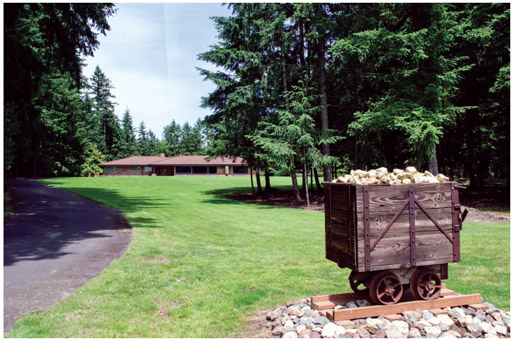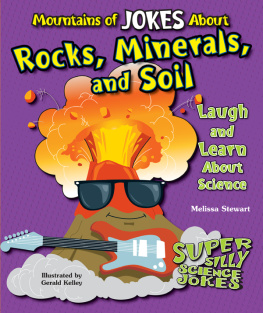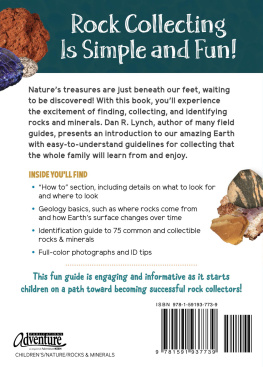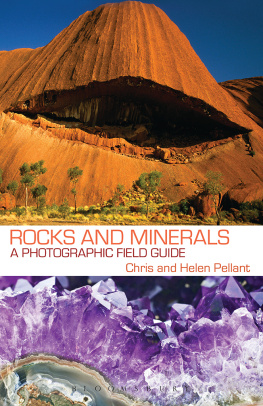Garret Romaine - Rocks, Gems, and Minerals
Here you can read online Garret Romaine - Rocks, Gems, and Minerals full text of the book (entire story) in english for free. Download pdf and epub, get meaning, cover and reviews about this ebook. year: 2020, publisher: Falcon Guides, genre: Children. Description of the work, (preface) as well as reviews are available. Best literature library LitArk.com created for fans of good reading and offers a wide selection of genres:
Romance novel
Science fiction
Adventure
Detective
Science
History
Home and family
Prose
Art
Politics
Computer
Non-fiction
Religion
Business
Children
Humor
Choose a favorite category and find really read worthwhile books. Enjoy immersion in the world of imagination, feel the emotions of the characters or learn something new for yourself, make an fascinating discovery.

- Book:Rocks, Gems, and Minerals
- Author:
- Publisher:Falcon Guides
- Genre:
- Year:2020
- Rating:5 / 5
- Favourites:Add to favourites
- Your mark:
- 100
- 1
- 2
- 3
- 4
- 5
Rocks, Gems, and Minerals: summary, description and annotation
We offer to read an annotation, description, summary or preface (depends on what the author of the book "Rocks, Gems, and Minerals" wrote himself). If you haven't found the necessary information about the book — write in the comments, we will try to find it.
Rocks, Gems, and Minerals — read online for free the complete book (whole text) full work
Below is the text of the book, divided by pages. System saving the place of the last page read, allows you to conveniently read the book "Rocks, Gems, and Minerals" online for free, without having to search again every time where you left off. Put a bookmark, and you can go to the page where you finished reading at any time.
Font size:
Interval:
Bookmark:
Garret Romaine, an avid rockhound, fossil collector, and gem hunter, is the author of multiple field guides, handbooks, and identification guides. He was a columnist for Gold Prospectors magazine for fifteen years and is a member of the board of directors of the Rice Northwest Museum of Rocks and Minerals in Hillsboro, Oregon.
Special thanks to the staff at the Rice Northwest Museum of Rocks and Minerals in Hillsboro, Oregon. Id like to single out Julian Gray and Leslie Moclock for their assistance.
Special thanks to my family and especially my wife, Cindy, who has supported me over all these years. Also thanks to Rachel Houghton, veteran technical communicator and longtime friend, who helped with photography, touch-up, editing, and encouragement, and to Martin Schippers, Frank Higgins, and Dirk Williams, who have been my most faithful assistants in the field.

Rice Northwest Museum of Rocks and Minerals (ricenorthwestmuseum.org)

An imprint of The Rowman & Littlefield Publishing Group, Inc.
4501 Forbes Blvd., Ste. 200
Lanham, MD 20706
www.rowman.com
Falcon and FalconGuides are registered trademarks and Make Adventure Your Story is a trademark of The Rowman & Littlefield Publishing Group, Inc.
Distributed by NATIONAL BOOK NETWORK
Copyright 2020 by The Rowman & Littlefield Publishing Group, Inc.
A previous edition of this book was published by Falcon Publishing, Inc. in 2012 and 2015.
Photos by Garret Romaine unless otherwise noted
All rights reserved. No part of this book may be reproduced in any form or by any electronic or mechanical means, including information storage and retrieval systems, without written permission from the publisher, except by a reviewer who may quote passages in a review.
British Library Cataloguing in Publication Information available
Library of Congress Cataloging-in-Publication Data available
ISBN 978-1-4930-4686-7 (paper : alk. paper)
ISBN 978-1-4930-4687-4 (electronic)
 The paper used in this publication meets the minimum requirements of American National Standard for Information SciencesPermanence of Paper for Printed Library Materials, ANSI/NISO Z39.48-1992.
The paper used in this publication meets the minimum requirements of American National Standard for Information SciencesPermanence of Paper for Printed Library Materials, ANSI/NISO Z39.48-1992.
The author and The Rowman & Littlefield Publishing Group, Inc. assume no liability for accidents happening to, or injuries sustained by, readers who engage in the activities described in this book.

To my uncle Doug, who never turned down a
chance to head out to the field.
alluvium: Dirt, usually. Stream and river deposits of sand, mud, rock, and other material. Sometimes sorted, if laid down in deep water; otherwise can be unsorted if deposited during floods, earthquakes, etc. If glaciers were involved, the term till is used.
anthracite: The hardest and most intensely metamorphosed form of coal.
arkose: Sandstone that has many unsorted, broken-up pieces of feldspar and quartz. Usually hard and not easily eroded.
basement: The lowest and oldest rocks around, usually metamorphic and frequently dating to the Precambrian or Paleozoic age. Basement rocks are usually less prone to erosion and make up mountain ranges and stunning cliffs. Basement refers to their placement at the bottom of a stratigraphic table.
batholith: General term that refers to extremely large masses of coarse intrusive rock such as granite. Any rock formation over 100 km2 (39 square miles) is considered a batholith.
bedding: The tendency of sedimentary rocks such as sandstone to reside in visible zones or marker beds, similar to tree rings.
bleb: A round or oval cavity, air bubble, hole, or vesicle, usually in basalt, and sometimes filled with opal, agate, or chalcedony.
chemical sediment: Refers to the way certain limestones and dolomites precipitate material such as calcium carbonate, which falls to the bottom of the sea or bay and accumulates.
clasts: Catchall term for the clay, silt, sand, gravel, cobbles, and boulders that make up nonchemical sedimentary rocks. The size of the clasts then determines the name of the rock.
clay: Usually refers to the smallest mineral fragments, smaller than 2m or / millimeter.
cobble: Fancy term for rocks between a pebble and a boulder. The exact definition of a cobble is anything from 64 to 256 millimeters in size.
contact metamorphism: The result of a hot igneous intrusion on the country rock. The contact zones between the intrusion and the surrounding rock can sometimes house interesting mineralization.
density: Defines the weight per an agreed unit of volume. By weighing the sample and then dunking it in water and measuring the volume of water displaced, we get the density measured in grams per cubic centimeter. The general term heft refers to a field test for how dense a typical-size hand specimen feels.
diatomite: Usually a white, chalky deposit that, upon microscopic inspection, turns out to be composed of tiny diatom fossils. These beds can often host common opal, precious opal, and zeolite deposits.
drift: General term for glacial deposits composed of jumbled debris. Outwash plains and terraces are usually sorted, whereas tills and moraines are unsorted.
dry wash: The sign of a seasonal stream that dries up during the summer months. These can be interesting for rockhoundsspecimen sizes are usually bigger because they have not been severely eroded.
eolian: General term for wind deposits such as loess, sand sheets, ripples, and dunes; also can refer to wind processes such as dust storms, sandblasting, and desert varnish.
eon: The longest division of geologic time is the super-eon. The model is super-eon  eon
eon  era
era  period
period  epoch
epoch  age. Thus, we are in the Holocene epoch of the Quaternary period of the Cenozoic era of the Phanerozoic eon of the Cambrian super-eon.
age. Thus, we are in the Holocene epoch of the Quaternary period of the Cenozoic era of the Phanerozoic eon of the Cambrian super-eon.
epoch: Shorter subdivision of a geologic period, usually corresponding to observed stratigraphy in the field.
era: The four main geologic eras, from oldest to youngest, are the Precambrian, Paleozoic (which starts with the Cambrian), Mesozoic (the age of reptiles), and Cenozoic (ours).
erosion: The forces and processes that continually grind down mountains and move their debris downwind or downhill.
evaporite: As bodies of water dry up under desert conditions, they frequently get white or light brown crystalline rings around the edges. These minerals are usually pure salt (halite, or sodium chloride) or a related halide, plus borax or gypsum as well.
exfoliation: Refers to the way rocks, and in particular granite, tend to slough off skins or layers of outer rock, like an onion. The result is usually a rough, rounded shape rather than angles and edges.
Font size:
Interval:
Bookmark:
Similar books «Rocks, Gems, and Minerals»
Look at similar books to Rocks, Gems, and Minerals. We have selected literature similar in name and meaning in the hope of providing readers with more options to find new, interesting, not yet read works.
Discussion, reviews of the book Rocks, Gems, and Minerals and just readers' own opinions. Leave your comments, write what you think about the work, its meaning or the main characters. Specify what exactly you liked and what you didn't like, and why you think so.




